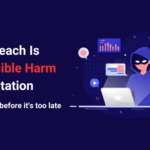The U.S. healthcare ecosystem contains hundreds of millions of health records, spread across tens of thousands of data sources. These records need to be aggregated and processed for exchange across thousands of health networks and must also be made available to healthcare consumers. This will provide patients with seamless control of their data while meeting the real-time needs of care providers who require fast availability of EHR data for diagnosis, treatment and holistic care management across the healthcare continuum. However, it’s challenging for health IT developers to design innovative solutions that facilitate the availability of health information in ways that comply with the myriad rules and laws governing health data while maintaining robust data security.
The Importance of Interoperability in the Healthcare Continuum
Most EMR systems today face a variety of challenges. They:
- Contain tremendous amounts of data from a variety of sources
- Weren’t designed to integrate different data formats or handle the explosion of data from other sources, like mobile phones, genomics and wearables.
- Have systems that are unable to transform large volumes of unstructured health data into usable information or aggregate diverse data points (pulled from multiple sources)
Providers looking to comply with the rolling deadlines for the implementation of ONC’s Cures Act and CMS Interoperability and Patient Access Rule also need a way to handle the rapid rise in data exchange needs caused by transforming and sharing health data to all relevant stakeholders. This creates a clear need for an IT infrastructure that deploys a dynamic framework for the seamless identification, authentication, authorization, privacy and security needed for data exchange to occur.
Interoperability is key to unlocking the long-term benefits of seamless access to and exchange of electronic health information. It’ll also resolve many of the challenges that healthcare actors face when taking steps to provide patients with seamless access to their data.
Role of regulations in interoperability
21st Century Cures Act
Goals:
- Make patient data requests easy and inexpensive
- Improve patient safety
- Prevent information blocking
Requirement:
- Exchange Electronic health
information using USCDI v1 data model by Oct 5, 2022 - Adopt standardized FHIR® API by Dec 31, 2022
- Adhere to Information Blocking provisions
- Meet ONC Certification criteria before Dec 31, 2022
Patient Access Final Rule
Goals:
- Provide patients with easier access to their health information
- Liberating patient data so it can be easily shared among different providers and healthcare systems.
Requirement:
- Account for the requirements of the Price Transparency for Payer by Jul 1, 2022
- Patient Access API
- Provider Directory API
- Payer to payer data exchange
21st Century Cures Act penalty
According to the Cures Act, providers and vendors that have engaged in information blocking and have submitted a false statement of compliance would become subject to civil monetary penalties. Presently, the civil monetary penalties for not complying with information sharing requirements have only been established for technology developers and health information networks. So, HHS top priority is now to close the gap between the penalty enforcement.
Closing Thoughts
Interoperability is crucial to the successful implementation of the regulation mandates and continued technological innovation around health IT practices and data. Making interoperability the new reality is key to unlocking the in calculable long-term benefits that seamless access to and exchange of electronic health information will deliver — quality and affordable care as well as price transparency and healthy competition among providers.






